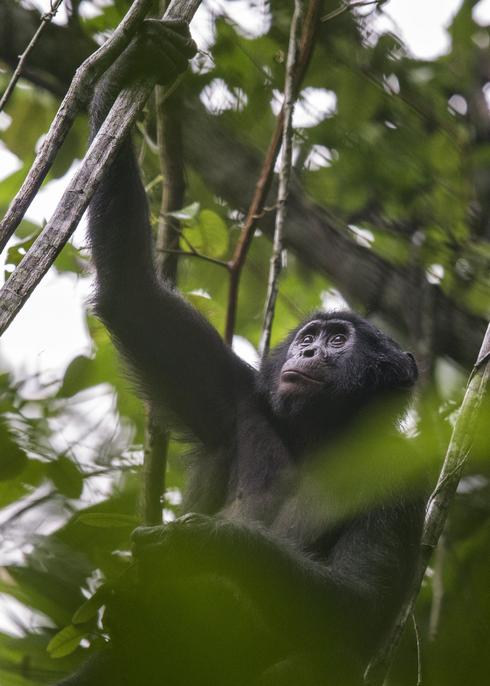The order is a tall one, and physically demanding.
“Before becoming a tracker, you have to know the forest,” says Mfari.
Trackers follow a group for the entire day, jotting down GPS coordinates to maintain a log of their movements, taking notes on what the bonobos eat and when they rest or play, and using binoculars to spot any injuries. Bonobos can move swiftly from treetop to treetop when they’re searching for food or feel threatened. The trackers—following on foot through dense forest—sometimes lose them briefly; they look for food scraps dropped to the forest floor and listen for the bonobos’ distinct calls to pick up the trail again. When the apes begin building their nests for the night, the trackers note their location and head back to the village. They re-enter the forest before dawn, when the canopy again begins to shake as the bonobos rise in the morning light.
The business is a boon for Mfari and the other trackers, who can now earn a steady living.
“If I get sick, I will be treated,” says Mfari, who’s been tracking bonobos since 2006. “I can buy items in the village. To me, this is an advantage.”
Bonobos are largely respected in the Malebo area. Local chiefs refer to the apes as ancestors, and parents reinforce to their children that this species is not one to hunt or eat. And just over 10 years ago, it was local communities that notified the government and conservation partners, via the local nongovernmental organization Mbou-Mon-Tour, that bonobos lived in this region—an area once considered outside of the conventional bonobo range. Still, bonobos remain officially classified as endangered, facing threats from poaching, accidental injury in snares, habitat loss, disease trade—and their status is likely to be changed to critically endangered.







